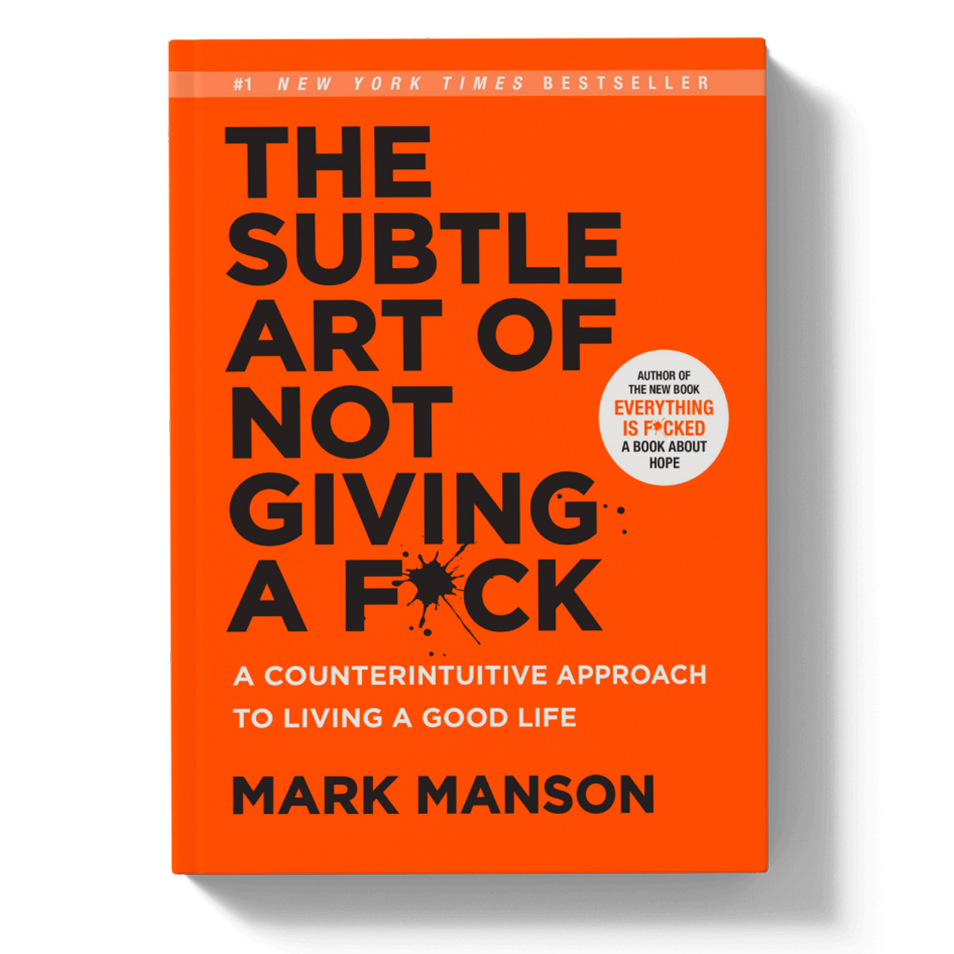Improving Your Eating Habits: A Guide by an English-Speaking Nutritionist in Madrid
Food has undergone significant changes in recent decades due to a variety of factors, including changes in eating habits, technological advances, food availability and lifestyle changes. Added to this is the change in food consumption patterns. With the fast pace of life, many people are relying more on foods prepared outside the home, such as takeaways, fast food and restaurants. These foods are often convenient, but they also tend to be high in calories, saturated fat, added sugars and sodium, and low in essential nutrients such as vitamins, minerals and fibre. In addition, they can contribute to weight gain and related health problems. This way of eating is very in common in certain countries. However, in Spain, it is more common to eat home-cooked meals. As an English Speaking nutritionist my task is to adapt your foods to similar ones to make them as healthy as possible.
There are also several common mistakes people make when eating. Here are some of the most common ones:
Most common eating mistakes
- Eating too many processed foods: Processed foods are often highly palatable, tasty, but high in calories, saturated fat, sugars and sodium, and low in essential nutrients such as vitamins, minerals and fibre. Eating too many processed foods can contribute to obesity, heart disease, type 2 diabetes and other health problems.
- Consuming sugary drinks instead of water: Sugary drinks such as soft drinks, fruit juices and energy drinks can be a major source of empty calories and added sugars. Opting for water instead of these drinks can help reduce calorie intake and improve hydration.
- Eating fast and distracted: Eating quickly and without paying attention to hunger and satiety cues can lead to overeating. It is important to take time to savour food and be aware of when you are full.
- Not paying attention to portions: Many people are not aware of proper food portions and tend to overeat. This can lead to unwanted weight gain and make it difficult to control portion sizes in the future.
- Not including a variety of foods in the diet: It is important to consume a variety of foods to get all the nutrients needed for good health. By limiting yourself to a few foods or food groups, you run the risk of not getting all the essential nutrients. For a complete diet we should eat at least 20 different foods a week.
- Skipping meals or extremely restrictive diets: The belief in wanting to be in line with current beauty standards leads many people to believe that skipping meals or following extremely restrictive diets is the quickest way to lose weight. However, this can lead to nutritional imbalances and long-term health problems.
- Relying too heavily on supplements: Supplements can be helpful in certain situations, but they should not be used as substitutes for a balanced diet. It is important to get the majority of nutrients from food rather than relying exclusively on supplements.

Fortunately, in recent years there has been an increased awareness of the importance of a healthy, balanced diet to prevent chronic diseases such as obesity, type 2 diabetes and heart disease. This has led to increased interest in nutrition and greater availability of information on healthy eating habits.
How to improve our diet
There are several ways to improve the quality of our diets and eat healthier. Among them are:
- Incorporate more fruits and vegetables: these foods are rich in vitamins, minerals, fibre and antioxidants, and are fundamental to a healthy diet. Try to include a variety of different coloured fruits and vegetables in your daily meals and snacks.
- Choose whole grains: Opt for whole grains instead of refined grains to increase your intake of fibre and nutrients. Choose whole grain products such as brown rice, whole wheat bread, whole wheat pasta and oatmeal instead of their refined versions.
- Eat lean protein: Lean protein sources such as chicken, turkey, fish, tofu, legumes and low-fat dairy products are excellent choices for healthy eating. Try to limit consumption of processed and red meats, which can increase the risk of chronic diseases.
- Limit consumption of processed foods and added sugars: Reducing your intake of processed foods, such as packaged snacks, fast food and baked goods, can help you reduce the amount of added sugars, saturated fat and sodium in your diet.
- Cook at home more often: Preparing meals at home allows you to have more control over the ingredients you use and cooking techniques. Try to cook with fresh, healthy ingredients and limit the use of unhealthy oils, fats and seasonings.

Making better food choices is fundamental to maintaining a healthy and balanced diet. As a nutritionist, and specifically, as an English Speaking nutritionist I try to help people adapt their meals to their lifestyles while respecting cultural aspects as well as food preferences. Many times in my practice I find that people have barriers to, for example, finding certain ingredients that are very important in their culture, or that meal times are very different.
It is not always easy, but in my practice, I always try to help plan meals in advance so that we can make more conscious and healthier choices. Spending time each week planning menus and making a shopping list with the necessary ingredients makes our lunches and dinners more beneficial for us.
Once the menus have been drawn up, which should prioritise fresh and unprocessed foods, we should also read food labels. When buying processed foods, it is important to read labels for nutritional content. Pay attention to the amount of calories, saturated fat, added sugars and sodium contained in the products. Usually fresh and unprocessed foods (fruits, vegetables, whole grains, lean meats, fish and low-fat dairy products are excellent choices for healthy eating).
It’s not just a matter of meal planning but also portion control. Pay attention to portion sizes and practice moderation when serving yourself. Use smaller plates, share plates in restaurants or save leftovers to avoid overeating. Just as it is not good to eat 3 plates of pasta, it is not good to eat 3 oranges in one sitting.
Finally, drink water instead of sugary drinks. What you eat is just as important as what you drink. Water is the best choice for hydration and contains no calories or added sugars. Opt for water instead of sugary drinks such as soft drinks, fruit juices and energy drinks.

It is important to be aware of these mistakes and try to avoid them in order to maintain a healthy and balanced diet. By following these tips and gradually making changes to your eating habits, you will be able to make better food choices and enjoy the long-term health benefits. Remember that the key is to adopt a balanced and sustainable approach to eating. As I say in consultation, there has to be time for everything. To eat well and also to indulge from time to time. It’s OK to eat something less healthy from time to time, but be aware that you can’t overindulge.
About the author:
Adriana Martín is an English Speaking clinical nutritionist at Sinews. She treats adults, adolescents and children seeking to improve their health through nutrition. She specialises in public health and also treats ED, SIBO, chronic diseases and other pathologies, as well as muscle mass gain or weight loss. Her approach is not to prescribe closed menus, but to make people understand the importance of nutrition at every stage of life through different tools.
Sinews MTI
Psychology, Psychiatry and Speech Therapy
The Shonagai philosophy: The power of acceptance in the face of difficulties
We live in the era of «chaos» forgetting our wallet, being stuck in traffic or our battery discharged can make us go into an emotional outburst. These situations beyond our control are part of the stress we face in our day-to-day lives. The ability to remain calm in the face of what we can and cannot control is fundamental to preserving a healthy mental and emotional well-being. Faced with this, in Japan the concept «shou ga nai» was born, which in our western version would be «what are we going to do». It is very easy to say, but how can we integrate the concept «shou ga nai» in our lifestyle?
Get to know the concept of "shou ga nai"
From the Japanese philosophy comes the expression «shou ga nai» part of a philosophy where many of those who practice it, recognize it as «the secret of happiness». The Shoganai philosophy has its origins in Buddhism, therefore, it reflects a style of coping from the acceptance of circumstances that we cannot control.
This ability to maintain serenity in the face of difficulties does not deny our emotions, indeed, it does not focus on the conformism of our reality but preserves our efforts to change that which we can transform. This direction of our energy is a great protective factor when considering the disease of the 21st century: stress.
This refreshing new perspective brings us a new coping strategy that takes us away from cognitive rumination, automatic thoughts or paralysis by analysis, to bring us greater peace in our daily life situations and in which we can find a point of support, to look at our concerns with a broad outlook.

The integration of shonagai into the western world
The Shoganai philosophy is based on the pillars of mindfulness, where the importance of living in the present is recognized, moving away from «what I could have done» in the past or «what I will do» in the future. This concept has been tried to be transferred within the Western world as (it is what it is) in English or the popularly known (C’est la vie) in French. In other languages such as Icelandic we find (Petta reddast).
Beyond the globalization of the concept, the real key to this philosophy lies in its integration into our daily lives. In the Western world, it may seem fatalistic or pessimistic to «throw in the towel» in the face of difficulties. The key has been practiced by the Japanese, who focus their efforts on respect and acceptance of good and bad cycles as part of the way.
This philosophy makes us see beyond the concept, a lifestyle completely removed from western standards of «productivity» and how little we are allowed to «stop». We can find different translations of «shou ga nai» but sadly it is very far from our integration in the face of difficulties. A good starting point to establish a new cognitive reframing in the face of difficulties focuses on the differentiation between: «Conforming» as a reactive attitude while «Accepting» is a mature and proactive attitude, which translates into emotional stability, a sense of inner control and self-knowledge.

How to practice the Shoganai philosophy? Here are 4 simple steps for its integration
Take an instance of things
Before starting to analyze a situation, it is key to take a step back and try to find a moment where our emotions are more settled. When we all receive bad news, we are flooded with negative and even catastrophic thoughts, we tend to put ourselves in the worst, going into a state of alert as a strategy of preparation for danger. A vital tool that can help us in practice is the puppy metaphor:
«We have a puppy and we see how it does not stop sitting on our sofa, chewing the cushions and even begins to leave us some gift around the house … through this metaphor, we will see how we will see how we sprout frustration and anger to have our house impeccable, however, we must be patient and focus our efforts on educating the puppy, since a scolding would not help us at all.»
Identify which are and are not in your control
Once the metaphor has been put into practice, we will begin to analyze those things that have disturbed our routine and have led to a state of chaos in our order. Before their appearance, we will take enough perspective to establish a critical judgment. We will differentiate between: Can I change it? Yes, we take action. Can’t I change it? «In this case, we should accept it and save our energy.
Practice gratitude
Gratitude is a crucial part of integrating this philosophy, so that when our efforts are focused on the things that inspire gratitude, we encourage the development of a positive attitude. In the term this attitude refers to the cultivation of our resilience as a tool for adaptability in the face of difficulties. In addition to this, an attitude of serenity in a «calm mind» makes us find new solutions in situations we had not previously contemplated.
The more practice, the greater the mastery
This type of strategies, like mindfulness, do not try to be established with a goal of hours of practice. The key lies in its frequency, i.e., if you have 5 stressful situations during the day and you practice these simple steps in the 5, you will be training the mastery of the flow of thoughts, seeing how they become less and less present and that you have much greater awareness and control over your emotions in front of these. This continuity of short time and high frequency is what really works our ability.

Know the 5 Benefits for your mental health through the practice of the "Shoganai" philosophy
- Reduce your cortisol hormone: As the hormone responsible for stress, cortisol is produced by our body in "emergency" situations in order to cope with those situations that are out of our routine. Cortisol is as necessary as any other hormone, since it is indispensable for those situations in which we are in real danger. However, its prolonged maintenance can be detrimental to our health, promoting emotional irritability, lack of sense of humor or provoking emotional outbursts of anger or sadness. Beyond this, our quality of sleep or our immune system is weakened by this continuity. In view of this, the practice of the Shoganai philosophy can reduce our reactivity to stress and thus establish a correct regulation of the hormone.
- Increase your ability of resilience: Resilience is one of the most important skills when facing the challenges of our life, and is that, bring serenity is also focus your inner energy to listen to you, understand you and especially recompose yourself from those setbacks that assail us without warning. The absence of this ability can cause fear or loss of control to paralyze us, leading us to a state of obsession or rumination of our own thoughts. It is clear that resilience will not make our problems disappear, however, it gives us the ability to see beyond them, to continue and to appreciate the good despite the difficulties.
- Improve the stability of your emotions: The Shoganai philosophy leads us to a greater state of consciousness by focusing on the acceptance of the present, that is, to focus our strength on what we really have, in order to be able to modify our reality. This makes emotions that lead us to frustration move away, establishing a greater mental balance and learning to manage those that appear to us with relativity to the facts.
- Promotes Self-knowledge: The practice of Shoganai leads us to a state of resignation which brings us to an encounter with our emotions, this encounter from the acceptance gives us a deeper understanding of ourselves and the recognition of where our limits of will are, being more aware of those things that predispose us in that state of alertness. This self-knowledge is a key ability to know how to work in these stressful situations.
- Improve your attention span with creativity: Controlling your focus of attention directly improves the quality of your attention. The Shoganai philosophy, not only helps us to establish this control, but, with the acquisition of this, we find new solutions through creativity. This valuable quality, as experts say, is blocked in those situations where there is an overactivation of certain brain areas. When we approach problems from worry or pressure, our brain goes into a "state of alert" trying to solve situations quickly and automatically and therefore limiting our ability to find creative solutions.

The importance of lifestyle for wellness
Having learned about the many benefits of this innovative philosophy, it is essential to recognize its practical application in order to integrate it as a pillar of our lifestyle. The concept of «shou ga nai» may begin as a simple expression, but it has the power to transform itself into a new way of perceiving life and every circumstance around us. Its adoption is not a passive process, but requires active commitment, willingness and awareness. However, the efforts invested in its practice bring us the peace and mental balance essential to face daily challenges with serenity. Now, I ask you: Are you willing to immerse yourself in the practice of the Shoganai philosophy?
Written by:
Paula Taguas Labrador
Sinews MTI
Psychology, Psychiatry and Speech Therapy
Dyslexia: no need to wait until children fail to read
Dyslexia is a specific learning disorder of neurobiological origin, characterized by difficulties with accurate and fluent word recognition, verbal memory and verbal processing speed. It stems from a deficit in phonological awareness. It is a life-long disorder, although its impact on an individual can vary in different stages of their life. “Neurobiological” means that it is caused by certain cerebral abnormalities which are genetic in origin.
Although the number of early intervention programmes in schools, at least in Madrid, is growing, too often in schools, dyslexia is only detected when a child “fails” to learn to read and intervention only begins after a formal diagnosis is received, usually at around 7 years of age. The effects of delaying support-provision until this point is reached can include, not only bad academic performance, but also a negative attitude to school, low self-esteem and behaviour issues.
This article aims to provide information to teachers and parents on detecting risk of dyslexia in pre-readers and on the best techniques to ensure that children with difficulties learn to read successfully.

How much do teachers know about dyslexia?
Unfortunately, in contrast to the United States, there is still a lack of teacher training in dyslexia in Early Years and Primary schools in Spain, and the amount that teachers know about the disorder varies, depending more on their individual experience of children than anything else. The fact that dyslexia is one of the most common disorders to encounter in the classroom (in Spain the percentage of children with dyslexia is 7-10%) underlines the importance of addressing this problem, through the provision of training and information resources.
Common myths surrounding dyslexia, which need to be dispelled, are, for example:
- that the main symptom of this disorder is writing letters back-to-front or reading words backwards;
- that dyslexia is caused by a problem with visual processing;
- that dyslexia is associated with a low level of intelligence;
- that dyslexia can be cured.
How can dyslexia be detected in children before they reach reading age?
There is considerable consensus amongst researchers as to what are the early signs that a child is at risk of later experiencing reading difficulties. Below is a list of the signs which should alert teachers and parents to the possibility of risk. It is important, however, to bear in mind that many children present at least one of these behaviours to some extent. It is when at least three of these signs are present, and especially if they persist over time, that the red flag should be raised:
Many of the early signs of dyslexia are listed in this article. Other early signs (in children of 3-5 years) include:
- Difficulty remembering the names of familiar things, or with learning numbers, colours and letters;
- S/he likes listening to stories but shows no interest in the words or letters on the page;
- “Good” and “bad” days at school, for no apparent reason;
- Difficulty remembering sequences, such as days of the week, months, etc.
- Lack of attention or concentration;
- Lack of motor control, especially fine motor skills with writing tools, or with buttoning up clothes, tying shoe-laces, etc.
- Problematic social behaviours.

In many schools in the United States, there are periodic screenings for children at risk of dyslexia. These take place in the classroom and are based on what is known as the Response to Intervention model. The success of this model has been backed up by substantial research.
How can teachers screen for children at risk of dyslexia?
The screening of children at risk is more likely to be accurate if it is based, not only on the early signs mentioned above, but also on family risk. When children enter the school system, Early Years teachers have the opportunity to gather information about the child’s family when they meet with the parents of the children in their class. By asking whether parents or siblings of the child have had reading difficulties or been diagnosed with dyslexia, they will know whether the genetic risk exists. Children who have a close relative with dyslexia are at significantly higher risk of having the disorder themselves.
Meetings or interviews between parents and teachers are a way that teachers can be made aware of the child’s development and behaviours at home. Teachers could also provide information to all parents about dyslexia and the signs to look out for. However, it is important that pre-readers are not labelled at this early age; the aim of the screening should be to identify children who might have problems with the learning-to-read process. It is always possible that children who are identified later do not demonstrate any problems, or that with a little extra support, they are able to attain the reading level of their classmates. It is also important to take into account that difficulties may also be linked to another type of disorder.

What should happen after children are screened?
Initially, the idea would be that children who are identified as being at risk of developing reading difficulties are given extra support and reinforcement with phonics and developing their phonological awareness, either by regular school teachers, teaching assistants or special needs teachers. Over time, it is possible that several groups of children need to be taught separately at different levels, although this depends on the availability of teachers to give such multi-level instruction. Screening children from a very early age is never going to be an accurate predictor. It is always possible that children who appear to show early red-alert signs later turn out not to have difficulty with phonics and reading. Screening children periodically means that there can be regular monitoring of how each child’s reading skills are developing. In this way, if a child who was identified as “at risk” is found to be learning at a faster rate than expected, they can always be moved to another group to receive less intensive instruction.
How do we give children the skills to learn to read in the classroom?
The basic steps which should be taken in order to prepare children for learning to read are outlined in this article. Some other guidelines to follow are:
- Teach letter sounds (phonemes) with small letters first;
- Start with the most frequently used letters;
- Associate letters with words through pictures (e.g. /b/ with a picture of a baby);
- Reinforce letter shapes by getting children to trace them in the air, in sand, or over the printed letter shape;
- Ask the child to find things (e.g. in the classroom), starting with that letter.
- Once children have learnt all the single letter phonemes, teach them to blend consonants with vowels. Usually, the best way in the English language is to start with 3-letter consonant-vowel-consonant (cvc) words. However, if a child has difficulty blending the three sounds, it can be best to focus on blending vowel-consonant sounds first (at/ig/up etc.) or consonant-vowel sounds (ma/bi/po).
How can parents support this process with their pre-reader child at home?
If parents suspect that their child might be at risk of having difficulty learning to read (see the section above on early signs), they should not hesitate in informing teachers. It is also important that they share with teachers techniques which they have found work or do not work for their child at home.
Below are some more guidelines for parents:
- Try and look at books every day. Read stories and poems. A child does not automatically know how to hold or open a book, where the story begins, where the top of the book is, or in which direction words are read.
- Watch television or learning videos together. Children learn a lot more if they watch programmes together with their parents.
- Trace shapes and letters and make letters with plasticine.
- Play “I Spy” with letter sounds.
- Clap the syllables in words.
- Sing rhyming songs or songs about the days of the week, months of the year, etc.
- Magnetic letters are also very useful for reinforcing letter sounds, syllables and words at home.
- Expose your child to new words whenever possible to expand his/her vocabulary.

The following resources (Reading Rockets and Jolly Phonics) can be very useful for parents:
Family Guide from Reading Rockets | Reading Rockets
Hear all the letter sounds – Jolly Phonics (jollylearning.co.uk)
Although on the surface the Response to Intervention model requires an initial commitment of resources, especially human resources (teachers) for the regular screenings of young children and multi-group teaching, the argument in its favour is that if this results in fewer reading difficulties at a later stage, fewer resources will be needed for children once they reach reading age. Add to this the benefit of avoiding all the emotional, psychological and behavioural problems in children who do not receive the support they need in order to learn. Whatever strategy is used, it is very clear that we should not wait for children to fail at reading before we help them.
About the author:
Julia Jakubovics is from the UK. She has lived in Spain for over 20 years. She has a degree in Psychology and recently completed a Masters course in Interventions for Learning Difficulties in Children at ISEP (Instituto Superior de Estudios Psicológicos). She is currently working as a Shadow Teacher and Study Coach for Sinews, providing one-to-one and in-class support for children with special education needs.
Sinews MTI
Psychology, Psychiatry and Speech Therapy
Balancing diet and culture: Reflections from an English-speaking nutritionist in Madrid
Explore how cultural differences affect diet and nutrition, and how an English-speaking nutritionist in Madrid can help combining cultural dietary practices with healthy eating habits.
Moving to another country often involves significant changes in lifestyle habits, including eating habits. These changes can be due to a variety of factors, and it is important to be prepared to adapt to new practices and environments. The timing of (late) meals, for example, is something that comes as a big surprise to foreigners when they move to live in Spain.
In our country, food has a significant cultural, social, and economic importance as well as playing a central role in people’s daily lives. Spanish gastronomy is internationally renowned for its diversity, richness of flavours and the importance given to fresh, local ingredients. In addition, the socialising around food reflects the richness of the Spanish culinary tradition.

Cultural differences of food in Spain
This deep-rooted tradition of Spanish food can have a negative impact on the eating habits of people moving to Spain. It must be understood that cultural differences can have a significant impact on people’s nutrition. Here are some ways in which cultural differences can affect nutrition:
- Food preferences: Cultures have different preferences for tastes, textures, and types of foods. For example, some cultures may base their diet on spicier foods, while others may prefer milder or sweeter foods. These preferences can affect food choices and thus, the nutritional quality of the diet.
- Dietary patterns: Cultures also have specific dietary patterns, which may influence the frequency and quantity of meals consumed. Some cultures may have a habit of eating several small meals throughout the day, while others may opt for larger meals at certain times.
- Symbolic meanings of food: Food may have symbolic meanings in different cultures. Some foods may be associated with celebrations, rituals, or special events. This may influence the amount and type of food consumed on certain occasions, affecting nutritional intake.
- Food availability: The availability of certain foods may vary according to geographical region and climatic conditions. This can affect the variety and quantity of food available in each culture, which in turn influences the nutrition of the population.
- Social norms: Social norms around food, such as the acceptance or rejection of certain foods, can be strongly influenced by culture. These norms can affect food choices and quantity consumed.
- Gender roles: In some cultures, gender roles can affect nutrition, as expectations about who cooks, buys food, or decides about meals may vary. This can influence the quality and quantity of food consumed by different members of society.
- Tradition and intergenerational transmission: Recipes and food practices are often passed down from generation to generation. Culinary traditions can influence the choice of foods and how they are prepared, which affects the nutritional quality of the diet.
- Religious beliefs: Religious beliefs may have specific dietary restrictions that affect eating habits. For example, some religions may prohibit certain types of meat or processed foods.

How to find a balance between diet and culture
Finding a balance between diet and culture is essential to promote healthy and sustainable eating habits. Often moving to another country is synonymous with changes in our eating patterns, which can have a negative impact on our health. Seeing a Spanish nutritionist who speaks English and has lived in Australia can be beneficial for us as she will consider the following aspects:
- Respecting cultural preferences: Recognising and respecting the food preferences and culinary traditions of both countries is fundamental. This involves understanding the ingredients, cooking methods and food combinations that are significant in that culture. As a nutritionist, my job is to help combine aspects of both cultures to achieve a good diet.
- Adapt nutritional recommendations: It is important to adapt nutritional recommendations to the specific preferences and needs of a cultural community. This may include adapting dietary guidelines to reflect the most common dietary choices and to respect cultural or religious restrictions.
- Culturally sensitive nutrition education: Develop nutrition education programmes that take into account dietary practices and cultural beliefs. This helps people understand how to make healthy dietary choices within their cultural context.
- Incorporate local and seasonal foods: Encouraging the consumption of local and seasonal foods can be beneficial for both health and sustainability. Moreover, this aligns with many traditional food practices that have evolved to take advantage of the products available in the region. In Spain we have a great diversity of agricultural and livestock production that provides us with nutrient-rich foods.
- Promote dietary diversity: Encouraging dietary diversity is essential to ensure a balanced intake of nutrients. This can include exploring lesser-known but nutritious traditional foods.
- Celebrate festivals and cultural events with food: Integrating food into cultural celebrations and events strengthens the links between food and cultural identity. This can make people feel more connected to their traditions and at the same time promote healthy food choices. Spain is a country with a great diversity of festivities in which we eat traditional foods. Including us in our diet is a way of integrating into the new society.
- Address specific health challenges: Recognise and address specific health challenges within a cultural community. Some communities may face specific health issues related to diet, and it is important to address these issues in a culturally sensitive manner.
- Encourage home cooking: Promoting home cooking can be an effective way to maintain culinary traditions while controlling the quality of ingredients and portions.
- Adapt to cultural changes: Recognise that cultures evolve and change over time, and that eating habits may also change. Adapting to these cultural changes without losing sight of the importance of nutritional health is crucial.

In summary, consultation with a nutritionist when moving to another country can be essential to ensure that you maintain a balanced, healthy diet adapted to your new situation. Finding a balance between diet and culture involves respecting and celebrating traditional food practices while promoting choices that are beneficial to health and sustainable in the long term.
About the author:
Adriana Martín is a clinical nutritionist at Sinews. She sees adults, adolescents and children seeking to improve their health through food. She specialises in public health and also treats ED, SIBO, chronic diseases and other pathologies, as well as muscle mass gain or weight loss. Her approach is not to prescribe closed menus, but to make people understand the importance of nutrition at every stage of life through different tools.
Sinews MTI
Psychology, Psychiatry and Speech Therapy
Can We Break Free? Navigating Healing and Self-Discovery from Childhood Trauma
Childhood trauma, defined as significant experiences that deeply affected us during our early years, doesn’t just fade away. It leaves lasting impressions that influence our mindset as we grow up. These experiences not only leave immediate scars but also imprint evolving core beliefs that persist into adulthood. They shape the way we perceive ourselves, others, and the world at large. Childhood trauma can affect anyone, transcending demographics. However, with intentional effort and support, it is possible to overcome these challenging experiences and embark on a journey of healing and self-discovery.
What constitutes Childhood trauma and when does it leave its mark?
Childhood trauma includes a diversity of highly emotional experiences that affect an individual during the stages of childhood and adolescence development. Trauma is often popularly associated with near-death experiences, accidents, terrorism, wartime situations, and natural disasters. However, childhood trauma can also include other emotional experiences such as neglect, physical, emotional, or sexual abuse, exposure to violence, or the sudden loss of a loved one. The impact of childhood trauma is extensive, affecting cognitive, emotional, and physical development and often establishing the groundwork for long-term psychological effects in adulthood.
A key to identifying whether something in childhood has affected you may lie in discovering if you hold core beliefs about yourself, the world, or others that do not align with the «rational» evidence available but nonetheless generate significant emotional intensity.
The Illusion of a Happy Childhood
It is interesting to observe the paradox of childhood trauma. At times, some individuals find it challenging to recognize emotional neglect and may perceive their early years as if they had a happy childhood. This happens when obvious abuse is not evident, giving the impression that everything is good enough. The thing is, we might not realize that we missed out on important emotional support. Emotional trauma, therefore, becomes one of the most challenging to address, as often we are not aware of the deficiencies, such as the lack of emotional validation. It is difficult for us to understand that emotional neglect took place if we didn’t even have the opportunity to learn and recognize our emotional needs.

Symptoms of Childhood Trauma
Figuring out the signs of childhood trauma is key to understanding how it affects individuals. Each person experiences its influence differently; some exhibit all the symptoms, while others show a combination of them. The most common indicators are as follows:
- Emotional ups and downs: Confronting emotions is sometimes experienced as a roller coaster, with intense feelings of sadness, anxiety, anger, guilt, and/or shame, as well as joy. In fact, many individuals with childhood trauma often come to the first session wondering if they suffer from bipolar disorder.
- Cognitive beliefs: Being self-critical or holding the belief that we are not worthy of love, success, or happiness. This can manifest as difficulties in connecting with others, feeling inferior, or simply not paying much attention to oneself. "I'm not enough," "I'm unlovable," or "I have to be good" are some examples.
- Interpersonal challenges: Some people experience distrust when emotionally approaching others, or, at the opposite extreme, have difficulty setting boundaries with certain individuals due to a lack of tools to identify warning signs.
- Behavioural patterns: Sometimes, it may involve doing things that are not good for us, engaging in risky behaviours, acting impulsively, or even avoiding places or situations that bring back emotions related to our traumas.
- Physical symptoms: Our body can also provide some clues, such as changes in sleep, frequent health problems, or changes in appetite and eating habits.
Where Do Trauma Responses Manifest?
Identifying responses to childhood trauma entails recognizing how the fight, flight, freeze, and fawn instincts manifest. These innate reactions can be triggered in various life situations, influencing both behaviour and emotional well-being. Emotional flashbacks are also a symptom of childhood trauma.
Recognizing Childhood Trauma Responses:
1. Fight, Flight, Freeze, Fawn Responses:
Recognizing these instinctual responses: facing the situation (fight), fleeing from situations (flight), becoming paralysed (freeze), or adopting a people-pleasing or appeasing stance (fawn) can indicate the activation of childhood trauma triggers.
2. Emotional Flashbacks:
These episodes are intense emotional experiences in which the same emotional intensity as in the past event is relived. Recognizing emotional flashbacks involves identifying sudden and overwhelming feelings triggered by a current situation, which can be very intense and distressing. Thoughts of self-criticism may be experienced, along with intense feelings of shame, guilt, sadness, emptiness, or hopelessness. The emotional intensity is perceived as disproportionate to the event that triggers it. Emotional flashbacks, often triggered by returning to past environments such as family visits, can be overwhelming. Coping strategies include recognizing triggers, practicing grounding techniques, using self-talk statements, journaling, physical activity, creative expression, and setting boundaries. Additionally, it may also be beneficial to connect with our social network, maintain self-care rituals, employ cognitive-behavioural and emotional validation and acceptance techniques, and seeking professional help if necessary.

What happens during trauma-focused therapy for childhood trauma?
The treatment plan is not one-size-fits-all but is an individualized plan agreed upon between the individual and the therapist. As a psychologist, my primary goal is to understand the person’s needs and expectations and incorporate them into the treatment plan. Childhood trauma is not something we can address unless we are fully equipped and prepared, and the pace depends on each individual. In some cases, we may first work on addressing trauma-based triggers, while with other people, we may focus on establishing a routine and addressing unmet basic needs first. If it were a fire, we would have to extinguish it first and then discover what caused it.
Here is an example of a possible treatment plan:
- First session: We may discuss the reasons you think you could benefit from therapy. I will provide explanations about your symptoms and some exercises for you to apply in your daily life if you wish.
- Feeling safe and secure: We may work on techniques to stay connected to the present moment and strategies to manage intense emotions, preparing for when they arise. Trust in the therapeutic bond is also crucial. The idea is to build a strong relationship and keep communication open so you can feel supported on our journey together. Therapy should be a safe space where you never feel judged.
- Basic information: We may talk about symptoms, how trauma can affect your life, emotions, and beliefs you have about yourself, and what kind of progress we can expect in therapy.
- Delving into trauma: Only when you are ready and being very respectful of each person's pace, we may be able to talk about the history of trauma, process those memories (or emotions if you don't remember some parts of your past), and address any core beliefs that you may have. Our plan will involve a slow exposure to emotions related to trauma, taking solid, safe, and steady steps, always at your own pace.
- Emotional skills and coping strategies: You will also learn techniques to manage those intense feelings related to trauma. These are emotional coping strategies for difficult moments.
- Relationship patterns: It is common for trauma to affect the way we relate to others. We can also analyse these patterns in order to determine if there is something we need to work on regarding forming healthy and safe connections.
- Self-discovery: It's easy not to have a clear idea about your own interests or your identity when you have experienced childhood trauma. We will work on building a more positive and empowered "self." We can also explore personal values and set achievable goals.
- EMDR work: If you are interested, Eye Movement Desensitization and Reprocessing (EMDR) is an effective tool for working on childhood trauma. Before starting, we will ensure you have all the necessary coping skills.
- Conclusion: As we approach the end of our sessions, we will develop a relapse prevention plan and explore the next steps on your journey.
- Follow-up: Continuous adjustments will be made to the treatment plan as necessary. Your feedback is crucial for you to feel heard and supported.

Recognizing when to seek help
Seeking help, whether from understanding friends, supportive family, or mental health professionals, demonstrates strength, a genuine desire to change and it also represents a significant step toward healing and personal discovery. Part of a trauma response is to try to resolve things on our own or feel undeserving of support. Asking for help on the path to healing is crucial for effectively addressing the aftermath of childhood trauma.
If you are experiencing overwhelming feelings, your strategies and coping mechanisms are not having the results you expected, symptoms persist or intensify, or they begin to affect your daily functioning, whether at work, in relationships, or overall well-being, or if you find yourself socially withdrawing or experiencing feelings of isolation, it will mean you could benefit from extra support.
Remember, you are not alone in this journey, and there are resources available to support you in your process.
Helpful Self-Help Books
- "The Body Keeps the Score" by Bessel van der Kolk: This book explores the impact of trauma on both the body and mind, offering insights into effective therapeutic approaches and self-care practices.
- "Complex PTSD: From Surviving to Thriving" by Pete Walker: Walker provides a comprehensive guide for understanding and healing from Complex PTSD, offering practical strategies for self-help and personal growth.
- “The Book You Wish Your Parents Had Read (and Your Children Will Be Glad That You Did)” by Philippa Perry
- “Adult Children of Emotionally Immature Parents: How to Heal from Distant, Rejecting, Or Self-Involved Parents” by Lindsay C. Gibson
- "The Courage to Heal" by Ellen Bass and Laura Davis: Focused on survivors of childhood sexual abuse, this book provides a compassionate guide to healing, with exercises and insights to aid in the recovery process
- "Running on Empty" by Jonice Webb: Webb delves into the concept of Emotional Neglect, offering readers a path to recognize and overcome the impact of a childhood marked by emotional absence.
- "Self-Compassion: The Proven Power of Being Kind to Yourself" by Kristin Neff: Self compassion does not mean to feel sorry about yourself, but treating ourselves with kindness as we would treat a loved one. Neff explores the transformative power of self-compassion, providing practical tools to break free from self-critical patterns often rooted in childhood trauma.

The process of unlearning core beliefs developed from childhood trauma is a nuanced and individualized journey. It requires commitment, patience, and often the support of mental health professionals. In addition to professional guidance, self-help books can serve as valuable resources, offering insights and strategies for individuals navigating the path toward healing and self-discovery. Recognizing and addressing fight, flight, freeze, fawn responses, as well as emotional flashbacks, are integral steps in unravelling the tightly fabric of evolving core beliefs, paving the way for a more positive and fulfilling adulthood.
Breaking free from the lasting effects of childhood trauma is possible. It requires finding the correct formula that works for you, including self-reflection, external support, and a commitment to navigating the intricate terrain of healing and self-discovery.
About the author:
Marta Gray is a licenced Psychologist working at Sinews. She has a flexible approach combining different scientifically proven methods (Acceptance and commitment Therapy, CBT, EMDR) depending on the patient’s needs. Her main field of expertise is working with adults and she is specially interested in complex trauma, anxiety disorders, emotional deregulation and couple’s therapy.
Sinews MTI
Psychology, Psychiatry and Speech Therapy
How can I improve my emotional intelligence?
Emotional intelligence or the ability to understand and manage our emotions, is an invaluable resource that can make a difference in the quality of our relationships as well as in our personal and professional success.
Throughout the evolution of humanity, emotions have played a crucial role in survival. The ability to perceive and respond to emotions allowed our ancestors to react quickly and effectively to danger by feeling fear for example, or to strengthen social and family bonds through the joy of connection.
Today, emotions remain a crucial system of evolutionary signals, serving as rapid indicators of our experiences and triggering adaptive responses. Knowing how to manage them and turning them into our allies rather than enemies will determine the ability to make positive decisions, the quality of our interpersonal relationships, the ability to be resilient and cope with adversity, our overall health and well-being, as well as our professional performance.
Daniel Goleman, an American psychologist, popularized this concept through his book «Emotional Intelligence,» published in 1995. According to Goleman:
Emotional intelligence refers to the ability to recognize, understand, and manage our own emotions, as well as the ability to recognize, influence, and manage the emotions of others in our daily interactions.

Fortunately, emotional intelligence is not a fixed skill; it can be learned and improved over time. It is a key factor for success in life, both personally and professionally, and according to Goleman, it may even be more important than the Intelligence Quotient (IQ) in determining professional performance and overall well-being.
In an increasingly interconnected world, where human relationships play a fundamental role in personal and professional success, cultivating and improving our emotional intelligence becomes an essential task.
In this article, we will explore six practical strategies to enhance your emotional intelligence. We will discover how these skills can positively impact your overall well-being, decision-making, and the quality of your interpersonal relationships.
1. Self-awareness: The Foundation of Emotional Intelligence
Before you can manage your emotions, you need to be aware of them. Take time to reflect on your feelings. Keep an emotional journal to identify patterns and emotional triggers, labeling what you feel in different situations and understanding how your emotions affect your thoughts, behavior, and bodily sensations.
Self-awareness allows you to better understand your emotional reactions and provides you with the ability to manage them more effectively. This practice will help you recognize your automatic reactions and provide a solid foundation for emotional growth.
Self-awareness also involves being present in the current moment. Mindfulness is an effective technique for cultivating this awareness. Dedicate a few minutes each day to practice mindfulness, focusing on your thoughts and emotions without judgment. As you develop self-awareness, you become more capable of recognizing and understanding your own emotions.
2. Emotional Management: Learning to Channel Your Emotions
Once you are aware of your emotions, the next step is to learn to manage them. Practice emotional self-regulation by identifying strategies that help you stay calm in stressful situations. Meditation, conscious breathing, and practicing empathy with yourself are powerful tools for handling your emotions healthily. Establish routines that promote emotional stability in your daily life.

3. Empathy: Connecting with the Emotions of Others
Empathy is the ability to understand and share the feelings of others. Cultivating empathy strengthens your social skills and improves your interpersonal relationships. Actively listen to others, be aware of their emotions, and show understanding by paying complete attention to both non-verbal and verbal communication. Try to understand the experiences and perspectives of others without judgment.
This act not only strengthens your connections but also allows you to see the world from diverse perspectives.
Participating in activities that expose you to various experiences and points of view can broaden your empathetic understanding. Reading, volunteering, and engaging in diverse groups allow you to encounter different realities and increase your ability to empathize with a broader range of emotions and experiences.
4. Social Skills: Building Healthy Relationships
Social skills are essential for success in personal and professional life. Develop the ability to communicate effectively, resolve conflicts constructively, and practice assertiveness. Building healthy relationships involves setting clear boundaries, expressing your needs respectfully, and being open to dialogue. Participating in group activities can be an excellent way to practice these skills.
5. Motivation: Driving Personal Growth
Motivation is a key component of emotional intelligence. Reflect on your values and long-term goals. What drives you to get up every morning? By aligning your goals with your fundamental values, you will find a lasting source of motivation. Discover what you are passionate about and set meaningful goals that inspire you and drive you to grow.
The ability to maintain motivation even in challenging times is crucial for overcoming obstacles and achieving long-term success. Stay focused on your goals, even when facing obstacles, and use challenges as opportunities for growth. Remember that the path to achievement may be filled with obstacles, but facing them with determination strengthens your emotional resilience. Celebrate successes, even small ones, and learn from failures.
6. Continuous Development: A Lifelong Commitment
Improving emotional intelligence is not a destination but a continuous journey. Commit to learning and growing over time. Seeking guidance from professionals and reflecting regularly on your emotional experiences are part of the constant commitment to personal development that will help you maintain strong emotional intelligence throughout your life. Each experience, positive or negative, is an opportunity to learn. Reflect on past emotional situations and consider how you could have handled things differently. This constructive self-reflection fuels emotional growth.

In conclusion, emotional intelligence emerges as a fundamental pillar that supports multiple facets of a person’s life, impacting both psychological well-being and success in various areas. From interpersonal relationships to the professional sphere and mental health, the influence of emotional intelligence is omnipresent, outlining the path to a fuller and more satisfying life. The journey to improving emotional intelligence is a valuable process that significantly contributes to personal well-being and healthier relationships. By developing self-awareness, managing emotions, cultivating empathy, improving social skills, maintaining motivation, and committing to continuous development, you are on the path to a more enriching and fulfilling life.
Cultivating this skill not only enriches the life of each individual but also positively contributes to the building of more compassionate communities, collaborative work environments, and resilient societies. Thus, emotional intelligence reveals itself as an essential tool for embracing the complexity of the human experience and moving towards a life full of meaning and connection.
About the author
Verónica Sarria is a health psychologist at Sinews. She is specialized in eating disorders and obesity, working with adolescents and adults. She also treats other problems such as anxiety, depression, grief, self-esteem and interpersonal relationship problems, among others. Her orientation is cognitive behavioral but she integrates tools and techniques from other currents according to the needs of each patient, thanks to her training in mindfulness, mindful eating, attachment theory and systemic (family) therapy.
Sinews MTI
Psychology, Psychiatry and Speech Therapy
Exploring EMDR Therapy: Treating Trauma with Sensory Stimuli
EMDR Therapy, known as Eye Movement Desensitization and Reprocessing, represents a therapeutic approach that integrates sensory stimuli to address past traumatic experiences.
What does EMDR Therapy involve?
This therapeutic approach is designed to assist individuals in overcoming emotional traumas. During sessions, the therapist guides the patient to focus on disturbing memories or images, using lateral eye movements, bilateral sounds, or tactile stimulation.
These sensory stimuli facilitate the unlocking of the processing of traumatic memories, allowing the brain to process them in a more adaptive manner.
In what situations is EMDR Therapy recommended?
Primarily, it is used to treat Post-Traumatic Stress Disorder (PTSD), although it has also shown effectiveness in other psychological disorders such as anxiety, depression, phobias, and eating disorders. Additionally, its use has been explored in cases of addiction and chronic pain.

How are EMDR sessions conducted?
Sessions typically last 60 to 90 minutes and are structured into different phases.
Initially, the therapist assesses the patient’s medical history and specific needs. Subsequently, they guide the individual to identify a clear treatment goal. In the next stage, the therapist facilitates the desensitization of traumatic memories, using sensory stimuli such as eye movements, bilateral sounds, or tactile stimulation.
Finally, the therapist works with the patient to consolidate the results obtained and establish a plan of action for the future.
How do eye movements impact EMDR Therapy?
According to Shapiro’s hypothesis, it is believed that eye movements in EMDR Therapy are related to how the brain processes and stores information. These eye movements can contribute to releasing traumatic memories and facilitating a more adaptive processing of the experience.
Is EMDR Therapy applicable to children?
Yes, EMDR Therapy can be adapted to work with children, adjusting the therapeutic process to their age and developmental level. Specialized therapists employ specific techniques to help children process traumatic experiences and overcome related symptoms. It is essential to provide a safe and supportive environment for children receiving EMDR Therapy to manage their emotions during and after treatment.
Sinews MTI
Psychology, Psychiatry and Speech Therapy
Why do I feel hungry all the time and how to avoid it?
Feeling hungry can have a variety of causes and understanding them can help you better manage your eating. Some common reasons why you might feel hungry are your own physiological needs, a lack of hydration, emotional factors, or what I see most often in consultation, low blood glucose levels.
Glucose is a type of simple sugar that serves as the main source of energy for many cells in the body. It is a monosaccharide, which means it is a sugar molecule made up of only one type of sugar unit. Glucose is essential for the proper functioning of the human body, providing the energy needed to carry out various cellular and metabolic functions. When this glucose is low in the blood, our body wants to increase it for energy.
When you eat foods containing carbohydrates, such as sugars and starches, your body breaks these compounds down into glucose during digestion. Glucose then circulates in the bloodstream and is transported to cells for immediate use as an energy source or stored in the liver and muscles as glycogen for future use.
Careful regulation of blood glucose levels is crucial to maintaining health. The hormone insulin, produced by the pancreas, plays a key role in this process, facilitating the entry of glucose into cells and helping to keep blood glucose levels within a normal range. Problems in glucose regulation, such as diabetes, can have significant health consequences.
When does blood glucose rise or fall?
Blood glucose tends to rise and fall in response to various factors, and we need to understand and be aware that this is a normal process in the body. Here are some common situations in which blood glucose levels may fluctuate:
- After Eating (Postprandial): After a meal, blood glucose levels tend to rise due to the absorption of glucose from food in the digestive system. This is part of the body's natural response to food intake. However, an unbalanced meal will lead to dysregulation of these glucose levels and make us hungry earlier than normal.
- Fasting or Prolonged No Food Period: During fasting or if too much time passes between meals, blood glucose levels may drop as the body uses stored glucose for energy.
- Exercise: Physical activity can lower blood glucose levels as muscles use glucose as a source of energy during exercise.
- Stress: Stress can affect blood glucose levels. In stressful situations, the body may release hormones that increase glucose levels to provide additional energy.

How do fluctuations in blood glucose levels affect our bodies?
Fluctuations in blood glucose levels can have diverse effects on the body and health, especially if these fluctuations are extreme or occur frequently. Here are some ways in which fluctuations in glucose levels can affect us:
Fatigue and Energy:
Low blood glucose levels can lead to fatigue and weakness, as cells do not receive enough energy to function properly.
High glucose levels can cause fatigue due to insulin resistance, where cells have difficulty using the available glucose.
These continual rises and falls in blood glucose will cause our bodies to experience momentary energy spikes and continuous spikes of extreme fatigue. This is something that many people think is normal on a day-to-day basis, but it is not. Maintaining regular blood glucose levels will also keep our energy stable.
Mood swings:
Swings in glucose levels can affect our mood. Low glucose levels can cause irritability and mood swings, while high levels can be associated with fatigue and lethargy. When we are in a low, listless state, we seek out foods that make us feel better, usually sweets, which will cause these glucose levels to rise rapidly.
Cognitive problems:
Low glucose levels can affect brain function and concentration. This is especially important because the brain relies heavily on glucose as an energy source. People with attention deficit disorder, autism, or other cognitive pathologies, maintaining regular glucose levels will prevent these problems from being exaggerated.
Physical symptoms:
Extreme swings can cause physical symptoms such as tremors, sweating, dizziness, and in more severe cases, fainting.
Organ and Tissue Damage:
Long-term elevated glucose levels, as in the case of poorly controlled diabetes, can contribute to organ and tissue damage, including the eyes, kidneys, nerves and blood vessels.
Increased Cardiovascular Risk:
Frequent fluctuations in glucose levels, especially if extreme, can increase the risk of cardiovascular disease.
Metabolic Problems:
Frequent swings can contribute to insulin resistance, which can lead to the development of type 2 diabetes.

What can we do to avoid glucose swings and keep hunger controlled?
If we start our day with a breakfast high in refined carbohydrates (white bread, pastries, biscuits or even cereals coming from a box) or even orange juice, our blood glucose will shoot up first thing in the morning. This will lead to a consequent drop in blood sugar and therefore an increase in appetite mid-morning (sounds familiar, doesn’t it?). Our body is wise, and once it gets that glucose spike first thing in the morning, it will always look for you to keep it that high, but it’s not healthy.
Keeping hunger at bay means adopting eating and lifestyle habits that help control your appetite. Here are some strategies that can help you keep hunger under control:
- Eat Balanced Meals: Include lean protein, complex carbohydrates and healthy fats at every meal. These nutrients provide a feeling of satiety and help keep energy levels stable. Follow the Harvard Plate for lunch and dinner, adjusting proportions to your physical activity, weight, height and goals.
- Eat Fibre: Fibre-rich foods, such as fruits, vegetables, whole grains and legumes, are more satisfying and can help keep hunger at bay by increasing satiety.
- Adequate Hydration: Sometimes, thirst can be mistaken for hunger. Drinking enough water throughout the day can help keep hunger under control.
- Avoid Refined Sugars and Carbohydrates: Foods high in simple sugars and refined carbohydrates can lead to fluctuations in blood glucose levels, which can increase appetite. Go for healthier sources of carbohydrates.
- Include Healthy Snacks: It's OK if you feel hungry between meals, choose healthy and satiating snacks, such as fruit, Greek yoghurt, nuts or veggies with hummus.
- Get Enough Sleep: Lack of sleep can affect the hormones that regulate hunger and appetite. Try to make sure you get enough sleep each night.
- Manage Stress: Stress can affect appetite. Practicing stress management techniques, such as meditation or yoga, can help control emotional hunger.

Remember that everyone is unique, and it can be helpful to experiment with different approaches to find what works best for you. A healthy eating pattern involves eating 3 times a day, 5 times a day or even 2 times a day. However, if you experience a constant and unusual feeling of hunger, or if there are significant changes in your appetite with no obvious cause, it may be helpful to consult a nutritionist for personalised guidance.
About the author
Adriana Martín is a clinical nutritionist at Sinews. She treats adults, adolescents and children seeking to improve their health through nutrition. She specialises in public health and also treats TCA, SIBO, chronic diseases and other pathologies, as well as muscle mass gain or weight loss. Her approach is not to prescribe closed menus, but to make people understand the importance of nutrition at every stage of life through different tools.
Sinews MTI
Psychology, Psychiatry and Speech Therapy
A Psychological Analysis of «The Subtle Art of Not Giving a F*ck» by Mark Manson
Mark Manson’s «The Subtle Art of Not Giving a F*ck» is a bold, irreverent take on the self-help genre that has taken the world by storm. Published in 2016, it challenges the notion that happiness can be achieved solely through positive thinking and relentless pursuit of pleasure. Instead, Manson presents a refreshing perspective on life, advocating for embracing pain, suffering, and the inevitability of problems as essential components of personal growth and happiness. In this review, we will explore the psychological insights and drawbacks of this provocative work.
What is Good in the Book from a Psychological Point of View
- Embracing Pain and Suffering: From a psychological standpoint, Manson's emphasis on embracing life's difficulties is a refreshing departure from the prevalent positive thinking culture. Psychologically, this aligns with the concept of "resilience." Resilience is the ability to bounce back from adversity, and studies have shown that individuals who embrace life's challenges and setbacks tend to develop greater resilience. By encouraging readers to confront pain and suffering head-on, Manson promotes a psychologically healthier approach to adversity.
- The Power of Values: Manson's focus on values also holds psychological merit. Psychologists often emphasize the importance of having a clear set of values as a source of motivation and well-being. Living in alignment with one's values contributes to a sense of purpose and fulfillment. Manson's idea that happiness and success naturally flow from living according to our values resonates with psychological theories on intrinsic motivation and self-determination.
- Accountability and Ownership: Manson's call for readers to take responsibility for their lives and their reactions to events echoes principles of cognitive-behavioral therapy (CBT). CBT emphasizes that our thoughts and beliefs influence our emotions and behaviors. By acknowledging our role in shaping our experiences, we can gain greater control over our lives and well-being. Manson's emphasis on personal accountability aligns with CBT's goal of identifying and modifying unhelpful thought patterns.

What is Bad in the Book from a Psychological Point of View
- Oversimplification: One psychological criticism of the book is its tendency to oversimplify complex emotional and mental issues. While Manson's "not giving a f*ck" philosophy can be empowering, it may not be suitable for individuals grappling with severe mental health issues such as clinical depression or anxiety disorders. Such individuals may require more nuanced psychological interventions and support.
- Neglect of Systemic Factors: Manson's approach places significant emphasis on individual responsibility, sometimes overlooking the impact of systemic factors on a person's life. Psychologists recognize that external factors, such as socio-economic conditions, can profoundly affect an individual's mental health and well-being. An exclusive focus on personal responsibility might not adequately address these external influences.
- Limited Psychological Depth: While Manson's "not giving a f*ck" philosophy resonates with many, it doesn't delve deeply into the psychological theories and evidence that underpin it. Readers interested in a comprehensive understanding of the psychological principles behind Manson's ideas might find the book lacking in this regard. A more thorough exploration of the psychological underpinnings could have added depth to his arguments. However, this is information that should be provided by professionals that ensures to use updated and evidence based information.

IHow Can You Learn to Not Give a F*ck
Learning to «not give a f*ck» in the Mansonian sense involves several psychological principles:
- Mindfulness: Manson advocates for being present and fully engaged with life's challenges. Mindfulness, a psychological practice, teaches individuals to observe their thoughts and emotions non-judgmentally. This can help in confronting pain and suffering without getting overwhelmed.
- Values Clarification: Identifying and clarifying your core values, as Manson suggests, aligns with psychological theories on motivation and well-being. Psychologists often use values-based interventions to help individuals lead more fulfilling lives.
- Cognitive-Behavioral Techniques: Manson's call for personal accountability resonates with cognitive-behavioral therapy (CBT). Learning CBT techniques can help individuals identify and modify unhelpful thought patterns that contribute to emotional distress.

Some Important Keywords and Their Significance
- Resilience, a psychological concept, refers to an individual's ability to bounce back from adversity. Manson's emphasis on embracing life's difficulties aligns with the idea that facing challenges head-on can foster resilience. Psychologically, developing resilience is crucial for maintaining mental well-being in the face of life's inevitable setbacks.
- Values: The concept of values plays a significant role in both Manson's philosophy and psychological well-being. In psychology, values represent an individual's core beliefs and motivations. Living in alignment with one's values is associated with greater life satisfaction and happiness.
- Accountability: Personal accountability, a key theme in Manson's work, echoes principles of cognitive-behavioral therapy (CBT). CBT emphasizes that our thoughts and beliefs influence our emotions and behaviors. Taking ownership of our thoughts and reactions is a psychological principle that can lead to personal growth and emotional well-being.
- Confronting victimhood: Learning not to give a f*ck isn't just about adopting a new mindset; it's also about confronting some uncomfortable truths. Manson's direct and unfiltered writing style may feel offensive to some, but it carries an essential message. One of the crucial lessons of 'The Subtle Art of Not Giving a F*ck' is the importance of addressing the mentality of victimhood. Feeling like a victim can be seductive because it often leads to increased attention from the environment and lowered expectations for oneself. It creates a comfortable bubble of safety. Breaking free from this mindset, however, demands taking responsibility for your situation and decisions. Manson's candid approach might not be the gentlest, but it holds a lot of truth. Psychologists would typically approach this topic with more care, but the rawness of Manson's message resonates with many precisely because it forces readers to face the uncomfortable reality of their own agency in life's outcomes.
In conclusion, «The Subtle Art of Not Giving a F*ck» by Mark Manson offers a unique, sometimes controversial perspective on living a meaningful life. From a psychological standpoint, the book encourages valuable concepts like embracing adversity, clarifying values, and taking personal responsibility. However, it also raises concerns about oversimplification and the neglect of systemic factors. Learning to «not give a f*ck» requires a nuanced understanding of when and how to apply Manson’s philosophy alongside established psychological principles.
Sinews MTI
Psychology, Psychiatry and Speech Therapy
How is an Eating Disorder approached from a nutritional point of view?
An eating disorder (ED) is wide term for several types of disorders related to a person’s eating habits and behaviors. EDs include eating disorders such as anorexia nervosa, bulimia nervosa, and binge eating disorder, explained in this article, but may also encompass other conditions that do not fit neatly into these specific categories.
EDs are characterized by a dysfunctional relationship with food and may involve obsessive concerns about body weight, body image, and eating. These disorders can affect both a person’s physical health and mental health and often require professional intervention and treatment.
Some additional examples of eating disorders that may fall into the category of EDs include:
- Orthorexia: An obsessive focus on food choices considered healthy, with extreme restrictions and anxiety around "unhealthy" foods.
- Vigorexia: Also known as muscle dysmorphia, this is an obsessive preoccupation with being muscular and strong, which can lead to excessive exercise and supplement consumption.
- Nocturnal eating disorder: People with this disorder have episodes of excessive food intake during the night.
- Pica: A behavior of eating things that are not food, such as dirt, chalk or hair.
- Rumination: The involuntary repetition of regurgitating food, which may then be rechewed, re-swallowed or spit out.
It is important to note that TCAs can be dangerous and have serious health consequences if not properly treated. It is essential to see a doctor for an initial assessment of the situation, as well as a nutritionist who can help us to cope with and overcome our eating problem.

How is a consultation with a nutritionist like to overcome an ED?
A nutritionist plays a key role in the treatment of eating disorders as part of an interdisciplinary health care team. Their goal is to help individuals establish a healthy relationship with food, improve their nutritional intake and address the physical aspects of recovery. Here are some of the main actions a nutritionist performs in the treatment of an eating disorder:
- Nutritional assessment: The nutritionist begins by performing a detailed assessment of the patient's medical history, eating habits, exercise patterns and body composition. This assessment helps to understand the severity of the eating disorder and to determine the specific nutritional problems.
- Meal planning and dietary guidelines: The nutritionist works with the patient to develop a balanced and personalized meal plan. This involves setting caloric intake goals, macronutrient distribution (protein, carbohydrates, fats) and healthy food choices.
- Nutrition education: Provides education about nutrition and the importance of a balanced diet. Helps the patient understand how food affects their physical and emotional health.
- Monitoring and support: The nutritionist works closely with the patient to regularly monitor progress and adjust the meal plan as needed. He or she also offers emotional support and reinforces the importance of maintaining healthy eating habits.
- Gradual introduction of foods: In some cases, especially in eating disorders such as anorexia nervosa, the nutritionist helps the patient gradually reintroduce foods they have avoided or restricted for a long time, making sure they do so safely.
- Managing food anxiety: Helps the patient develop strategies to manage anxiety and fears related to food, which may include gradual exposure techniques.
- Teamwork: Work closely with other health care professionals, such as therapists, psychologists and physicians, to ensure a comprehensive approach to treating the eating disorder.
- Self-care education: The professional Teaches patients self-care skills related to eating and maintaining a positive relationship with food over the long term.
- Relapse prevention: Once stabilization and initial recovery have been achieved, the nutritionist works with the patient to prevent relapse and maintain long-term healthy eating habits.
It is important to emphasize that the treatment of eating disorders is a multidisciplinary process, and that nutritional therapy is only one part of comprehensive care. Medical and psychological care are also essential to address the physical and psychological aspects of eating disorders.

Is it important then to work with a nutritionist and a psychologist at the same time to address an ED?
The relationship between nutrition and psychology is very close and complex. The way we eat, and our diet can have a significant impact on our mental and emotional health, and in turn, our emotional and psychological states can influence our eating habits and dietary choices. This is why the joint work of a nutritionist, and a psychologist is essential in the treatment of eating disorders and other food-related problems. Both professionals bring their knowledge and skills to address both the nutritional and psychological aspects of these disorders.
After an initial evaluation, where both professionals analyse the situation, they contact each other to coordinate the treatment. The nutritionist and psychologist work together to develop a comprehensive and coordinated treatment plan. This involves setting nutritional and emotional goals, as well as a joint approach to addressing the patient’s needs. It is important that there is regular communication to share relevant information about the patient. This allows them to adjust treatment as needed and ensure consistent care.
Emotional support from the psychologist is critical to help identify and manage feelings and emotions related to eating and the eating disorder. On the other hand, the nutritionist will educate the patient on the importance of balanced nutrition and the relationship between physical and mental health with tools provided by the psychologist.

To sum up, detecting an eating disorder can be challenging, but it is essential to pay attention to signs and symptoms that may indicate the presence of a problem. Early detection and intervention are crucial to recovery.
It is important to remember that recovery from an ED is a gradual process and that each person is unique. Recovery may take time and effort, but it is possible. It is crucial to seek help as early as possible and to maintain an ongoing commitment to treatment and support along the road to recovery. Full recovery is an attainable goal, and many people have been successful in overcoming EDD with the right support.
In these types of cases, the relationship between nutrition and psychology takes on significant importance. Eating habits and mental health are closely interconnected, and the two can influence each other in a variety of ways. It is critical to understand how psychological factors can affect our eating patterns and how our dietary choices can impact our mental and emotional health.
About the author
Adriana Martín is a clinical nutritionist at Sinews. She treats adults, adolescents and children seeking to improve their health through nutrition. She specializes in public health and also treats TCA, SIBO, chronic diseases and other pathologies, as well as muscle mass gain or weight loss. Her approach does not consist in providing closed menus, but in making people understand the importance of nutrition at every stage of life through different tools.
Sinews MTI
Psychology, Psychiatry and Speech Therapy











